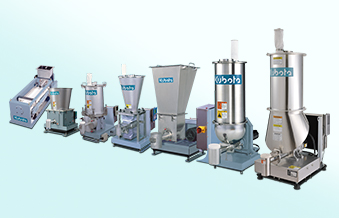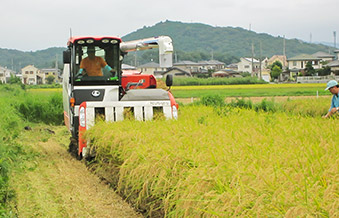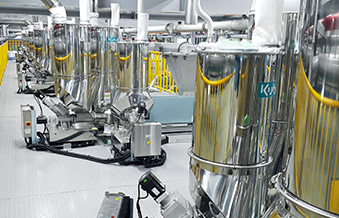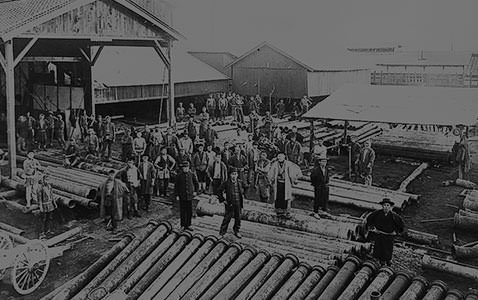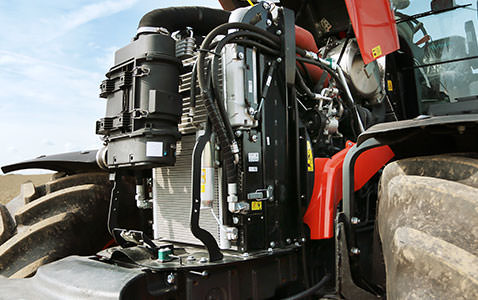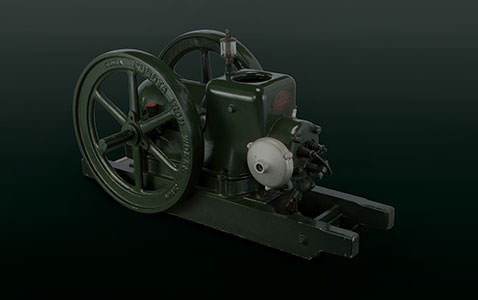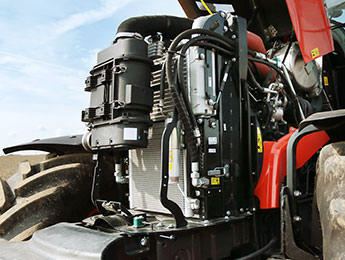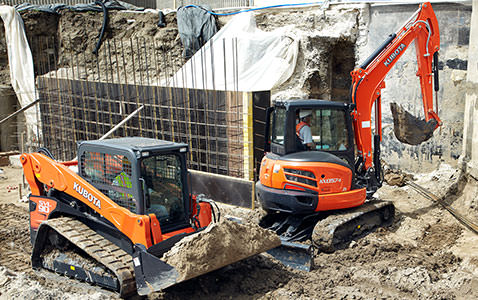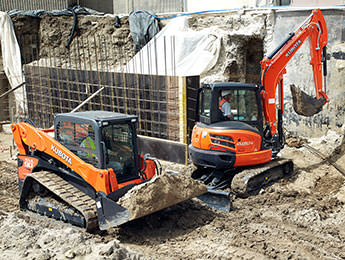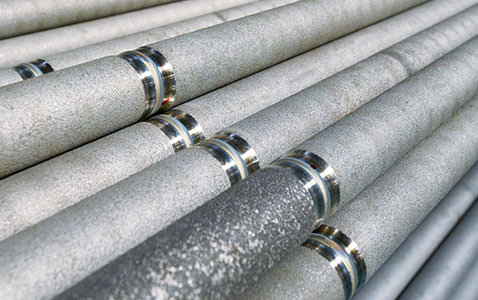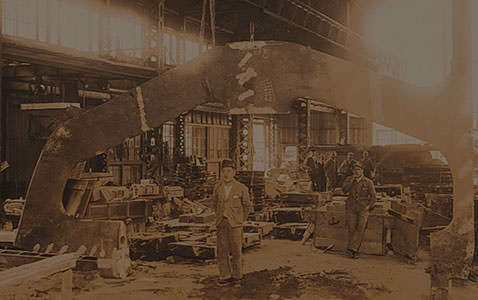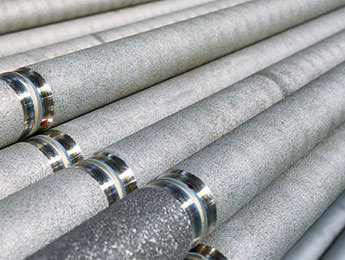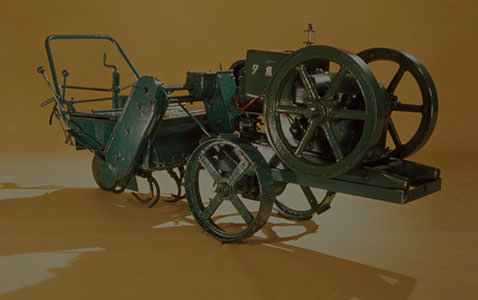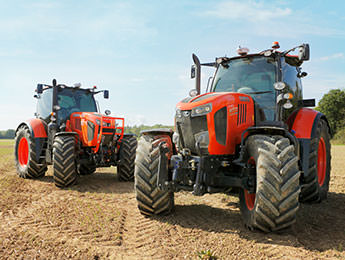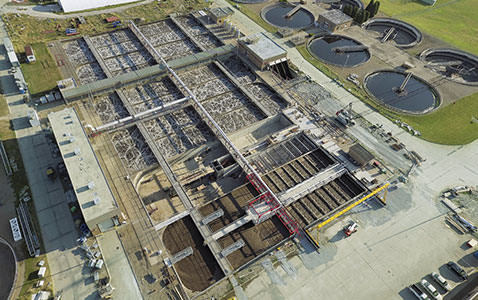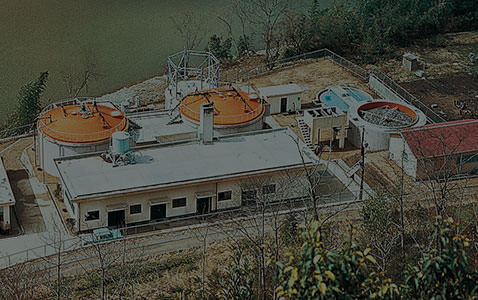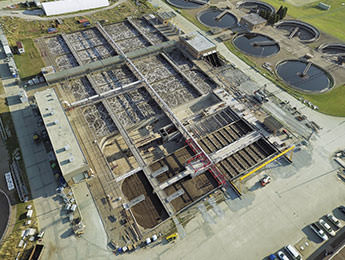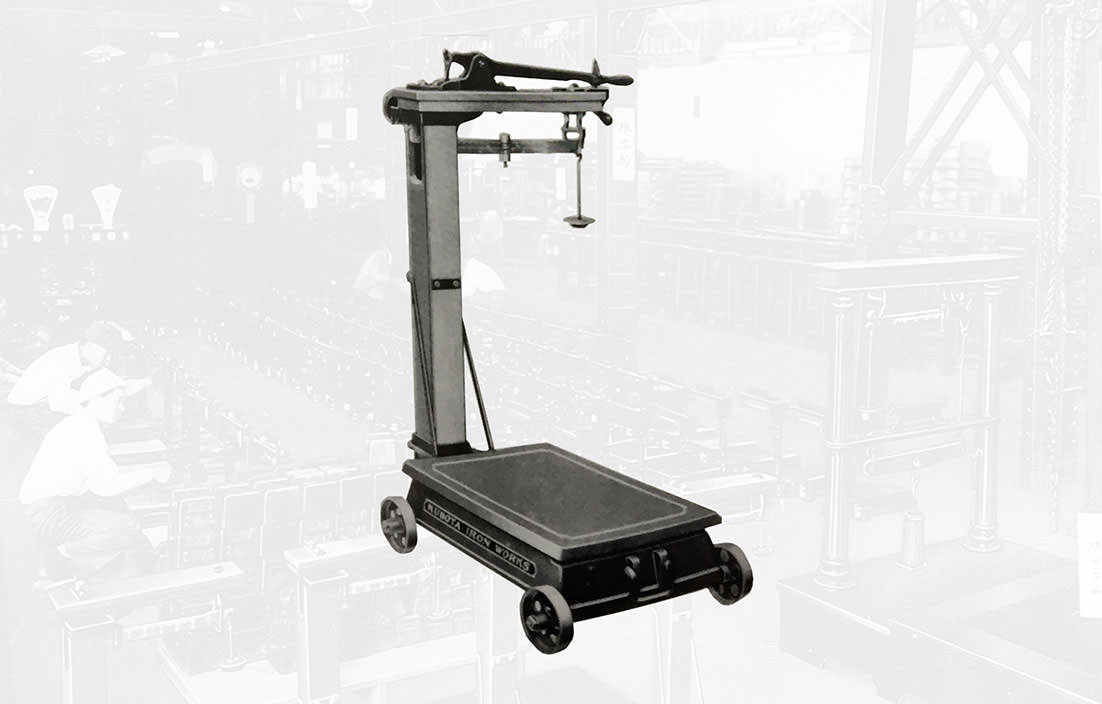
1890-1920s
Kubota’s Origin
—The Beginning of Casting and Scales
Cast Iron Scale Parts, Weight, Scale
Platform scale produced by Kubota in 1928
In 1890, Kubota independently started up Ohde Casting, casting various fittings and weights for balances with advanced casting technology and acquiring a good reputation. Later, when the Japanese measurement system was revised, the demand increased for platform scales with the new weighing units. Products and parts were mass-produced at the main plant, and the business rapidly grew.
Taking Part in the Spread of the Metric System and Modernization of Industries. Kubota Started Manufacturing at the Main Plant After Acquiring a Production License
In 1921, with the reform of the Japanese measurement system, which aimed to rationalize industries by establishing a standard for industrial products, the Japanese unit “kan” was converted to “kilograms,” requiring new scales. Although, at one point, Kubota’s business focused on manufacturing iron pipes and equipment, scales were its forte since its founding. With the prospect of increased demand for platform scales and balances with pans. Kubota called upon professional design engineers and craftsmen and developed prototypes, acquiring the license for manufacturing scales in 1924. It started manufacturing them in the main plant, and, shortly thereafter, opened the Ichioka plant with the goal of producing 120-150 scales per month.
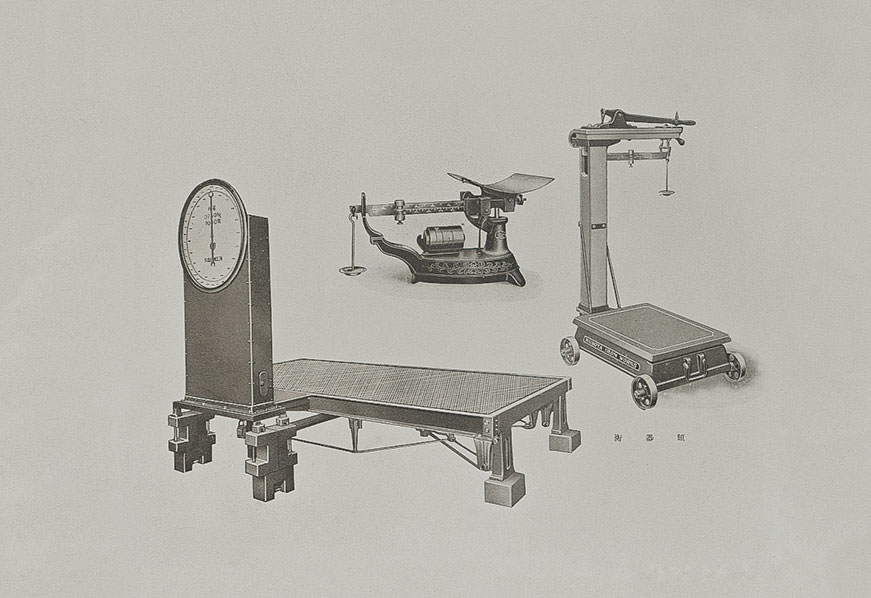 A platform scale and steelyard balance with pans produced
A platform scale and steelyard balance with pans produced
after Kubota acquired license for manufacturing scales
Kubota Supplied Standard Scale Parts Throughout Japan. Surpassing 50% of the Domestic Market Share, It Established a Robust Business Foundation
In 1919, the Metrology and Industrial Products Standards Committee promoted the standardization of platform scales and steelyard balances with pans. After the approval from the Ministry of Commerce and Industry in 1925, they rapidly spread as standard scales. Upon the request of the Central Weights and Measures Inspectors, Kubota developed prototype weighing instrument parts at this time. In order to ensure consistent parts quality, it repeatedly modified the metal mold and developed prototypes. In 1926, based on its work, the company was registered as a supplier of weighing instrument parts. It started providing scale manufacturers with parts, and its share surpassed 50% of the domestic market. In order to respond to the rising demand, it added a scale manufacturing facility in the Funade-cho Plant (main plant) in 1928.
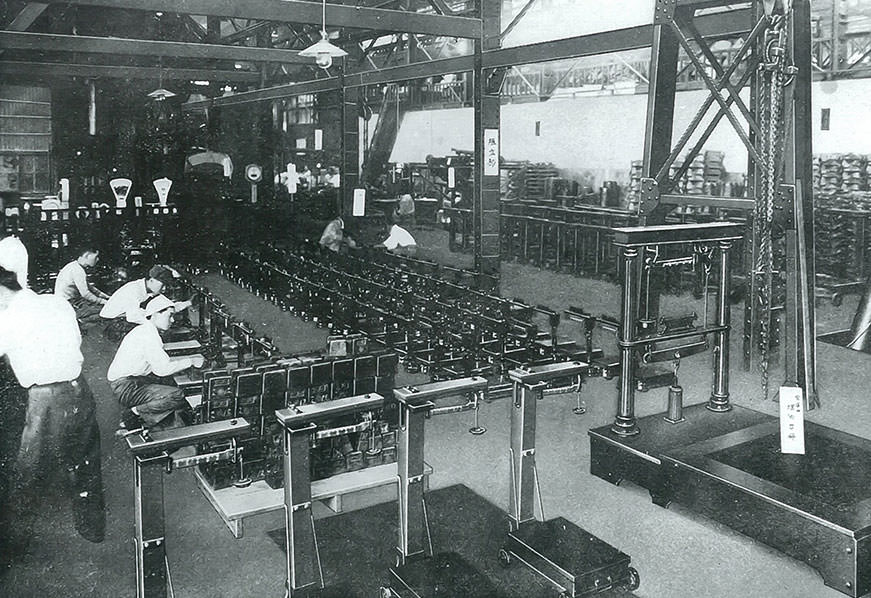 Scale assembly facility inside the Funade-cho Plant
Scale assembly facility inside the Funade-cho Plant
1930s
With the Rationalization of the Manufacturing Process,
the Importance of “Scales” Rose
In 1930s, ironwork, electricity, gas, and cement industries began to thrive. Companies introduced rational facilities, which took into consideration standardized as well as energy-efficient production processes. The number of offices with certified measurers increased, as awareness for “measurements” rose.
Scroll to See Next Story
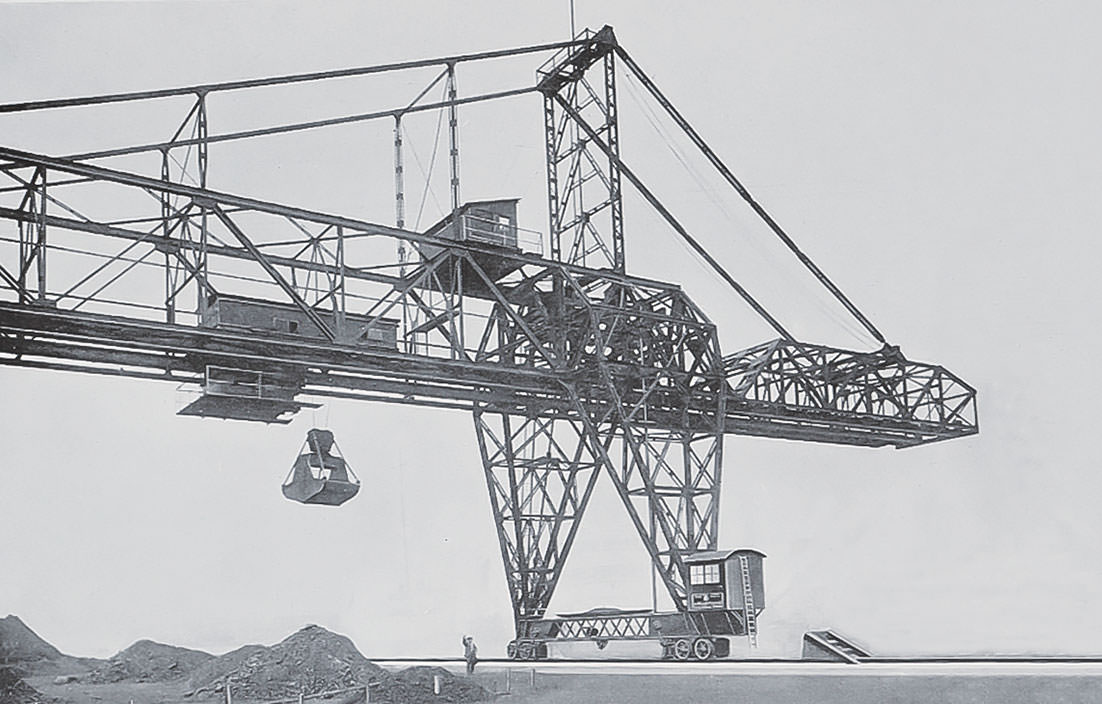
1930s
Full Scale Deployment of Industrial Scales
Industrial Scales
Crane scale developed for steels and mining
Anticipating the expansion of the measuring business, Kubota had repeatedly developed industrial scale prototypes, in addition to such standard scales as platform scales. Its earnest endeavor finally bore fruit. In those days, awareness regarding “measurements” increased among industries and corporations. Thus, the time had arrived for Kubota to enter the industrial field.
Industries Thrived Under the Economic Boom. Kubota Challenged to Produce Industrial Scales as Awareness Increased for “Measurements”
After the Showa Depression in late 1930s, the heavy and chemical industries business recovered. Companies strived to rationalize their production process. Accordingly, “scales,” which accurately weighed materials, came to be essential. Due to the economic recession, the production of scales stagnated. However, Kubota looked into extending the measuring business and started to research and develop prototypes. In the same year, Kubota acquired the Category II license for manufacturing all types of scales. Its research on the technology for developing such devices as an automatic consecutive weighing machine and large rail scale in the future bore fruit, and Kubota officially entered the industrial scale business. It supported the Japanese industry by dedicating itself to developing a wide range of weighing devices.
High-Quality Casting Parts were Kubota’s Forte. Applying Unrivaled Technology, Kubota Contributed to the Development of Industries
Kubota’s weighing instruments featured high-quality casting parts, such as thin weighing platforms and levers. These parts had no deformity or cracks, providing consistent quality required for weighing accurately. Based on its techniques, Kubota developed industrial scales and achieved remarkable success. In 1932, it delivered the first conveyor scale, which successively weighed coal that was transported on a conveyor, to Tokyo Gas Co., Ltd. In the following year, it supplied to this company a 30t-capacity rail scale, which was standardized by the Ministry of Railroad. In 1935, Kubota newly constructed a dedicated plant, and the preparation for full-scale production of large industrial scales had become robust.
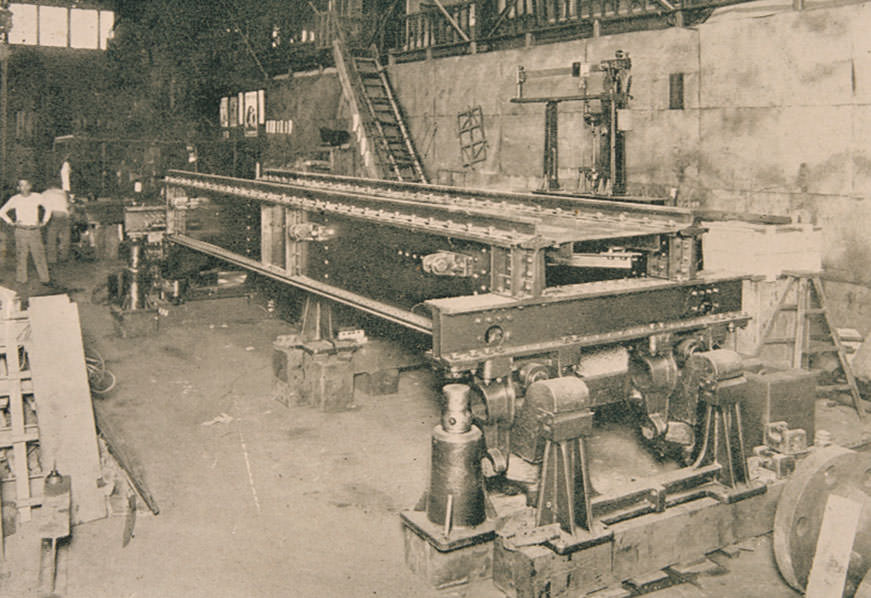 The first rail scale that Kubota supplied to Tokyo Gas Co., Ltd.
The first rail scale that Kubota supplied to Tokyo Gas Co., Ltd.
Assessed the Domestic “Weighing” Needs and Released Products One after Another Suitable for Each Industry
The types and needs of scales are diverse within each industry. Kubota’s salesperson and engineers visited weights and measures inspectors throughout Japan, studying their facilities and direction of technological development, creating new products one after another. For the cement, glass, and food industries, it provided such products as the hopper scale, which enabled continuous fixed-volume measurement of raw materials, and poidometer, which continuously mixed raw materials at a fixed ratio. Furthermore, it supplied such products as weighing devices for steel materials for the steel and mining industries, as well as crane scales. In addition, it invented the Type B Register, which prevented fraudulent measurements, and card-controlled, automatic recording device, working on various types of weighing devices.
1950-1960s
The Eve of Rapid Economic Growth. The Birth of the FA Concept
After recovering from the war and as the economic white paper stated that Japan was “no longer in the postwar era” in 1956, Japan was on the eve of rapid economic growth. Labor shortage became apparent in the country, raising the demand for factory automation (FA), which automated facilities and reduced workload.
Scroll to See Next Story
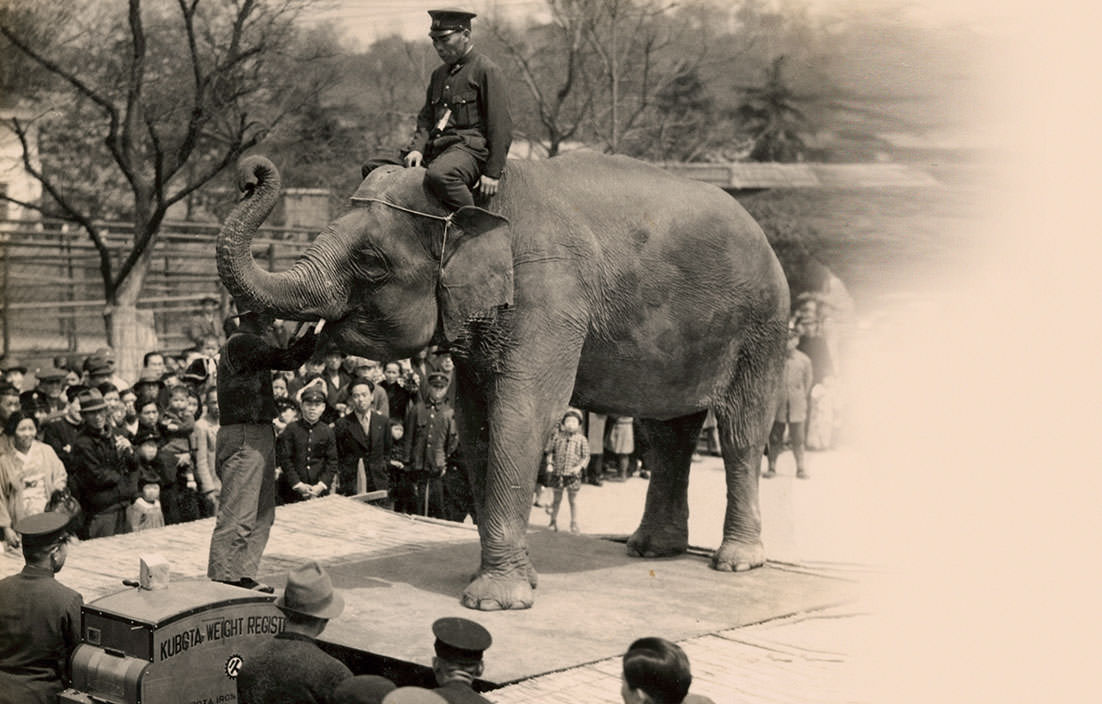
1950-1960s
Diversifying Industrial Scales. Introducing
Electronic Scales and Automatic Vending Machines
Electronic Scale, Automatic Bagging Machine, Automatic Vending Machine
Kubota’s large platform scale used to weigh Tennoji Zoo’s elephant, Haruko, in Osaka
As the need for industrial scales rose, Kubota developed various scales, while promoting their digitization. The automatic control and data processing technology gained through digitization accelerated systemization of scales, which led to expansion of business domain, developing raw material control system, automatic bagging machine, and automatic vending machine.
Along with the Increase in Facility Investment, the Diversification of Industrial Scales Progressed
After the war, Kubota resumed its production starting with standard scales, such as platform scales, which were in short supply due to the damages caused by war. Furthermore, as Japan’s infrastructure developed toward recovery, capital investments were extensively made in such field as iron and steel. As industries recovered, orders for rail scales and automatic consecutive weighing machines increased. Thus, Kubota’s industrial scale business restarted. It produced and delivered Japan’s first ingot scale to Yawata Iron & Steel Co., Ltd. (currently Nippon Steel Corporation) in 1951 and developed new products, such as the sintering poidometer (a facility to continuously mix raw materials) in 1953 and a poidometer with belt speed control the following year.
The Dawn of the Era of Electronic Scales. Kubota Expanded Its Business Domain with Automatic Control and Data Processing Technology
Around the time the demand for industrial scales rose, Kubota, in addition to conventional mechanical weighing machines, started to research electronic tube type weighing devices, which scanned loads with electric signals, opening the path for digitization of weighing scales. In 1955, Kubota built a manufacturing facility for digital weighing devices in the Funade-cho plant. There, it developed the electrical resistance wire type scale with weighing indicator, the first electronic tube type weighing machine. Kubota then expanded its automatic control and data processing technologies, advancing the systematization of weighing scales. It developed control systems for measuring, transporting, and mixing raw materials, such as steel, chemical, and cement, as well as automatic, labor-saving equipment, such as an automatic bagging device for salt and sugar, expanding its business domain.
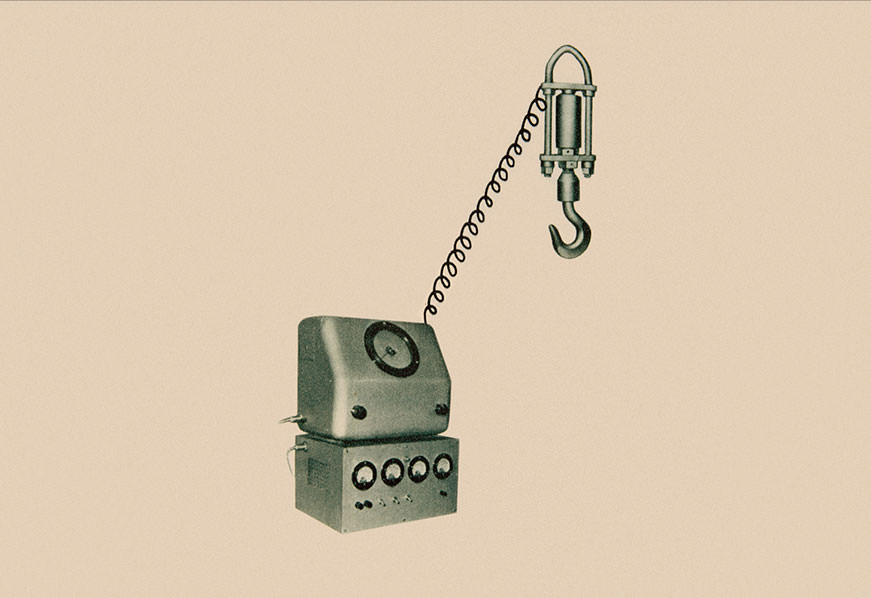 Electrical resistance wire type scale with weighing indicator,
Electrical resistance wire type scale with weighing indicator,
the first electronic tube type weighing machine
Automatic Vending Machines Born from the Auto Control Technology for Weights
In the first half of 1960, due to workforce shortage and sudden wage increase at the time, automatic vending machines started to spread as a means to save labor in the distribution process. In response, Kubota started manufacturing automatic vending machines in 1963. While many manufacturers adopted the technology from the United States, Kubota developed its own technology to produce these machines. Applying the automatic control technology acquired from developing the “health recorder (automatic weighing machine)” and weighing system in 1958, it created the prototype for an automatic milk vending machine in 1963. Later, the market for automatic vending machines suddenly expanded, and by 1968, automatic vending machine business developed to become one of Kubota’s business domain.
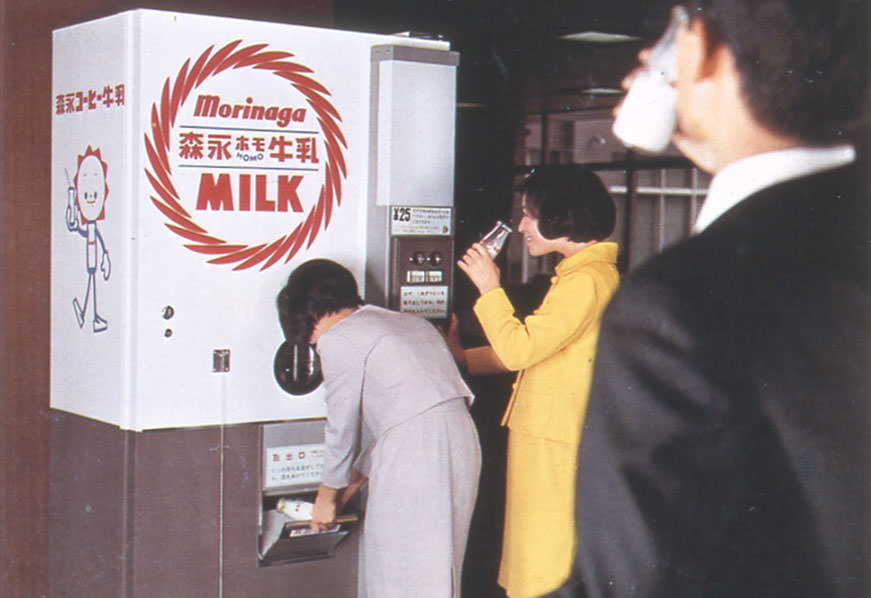 The first automatic vending machine in the dairy industry
The first automatic vending machine in the dairy industry
1960-1970s
The Era of Facility Digitalization Arrived
Due to the labor shortage caused by rapid economic growth, the need rose for automatic, labor-saving equipment in all industries. Meanwhile, electronic and measuring technologies rapidly developed, and digitization spread across the industrial world, requiring higher levels of performance, accuracy, and quality in weights and measures.
Scroll to See Next Story
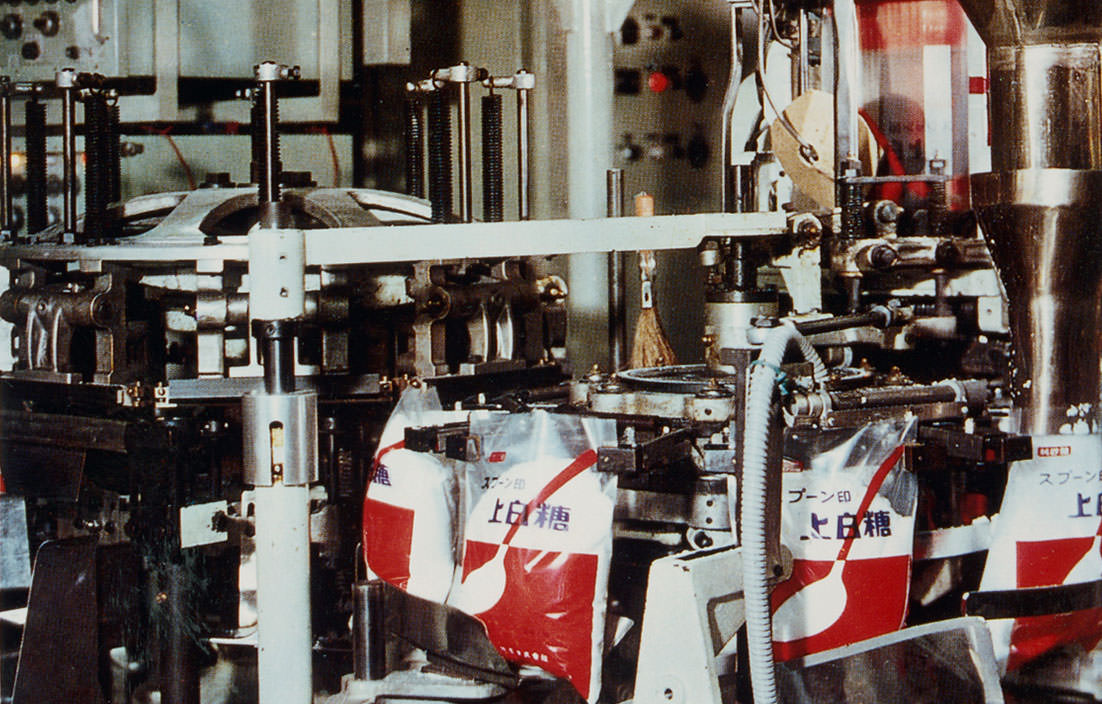
1960-1970s
From the Weighing Scale Business
to Automatic Instruments Business
Industrial Scale, Household Scale, Digital Scale
Automatic weighing and bagging machine used to automatically weigh and package sugar at high-speed
As measurement technology developed, load cell weighing devices, which gauged the strain of metal objects, appeared. Meanwhile, demand expanded in the household usage as well as in commercial field. In response, Kubota renamed its Weights and Measures Business Division to Automatic Instruments Business Division, diversifying and automating weighing machines.
High Precision Achieved by Applying Load Cells to Weighing Machines and the Digitization of Data
As the need for industrial weighing machines increased, weighing technology developed rapidly, introducing load cell (electronic weight sensing mechanism) weighing machines in addition to the conventional mechanical weighing machines. Load cells, which converted metal objects’ subtle strains into electrical signals, are precise and also offered digital data of the measurement. Kubota worked on applying load cells to its weighing instruments, releasing such products as the belt scale, poidometer, and automatic weighing and bagging machine. In addition, applying automatic control technology, it developed “Memo Pet”, an inventory management computer.
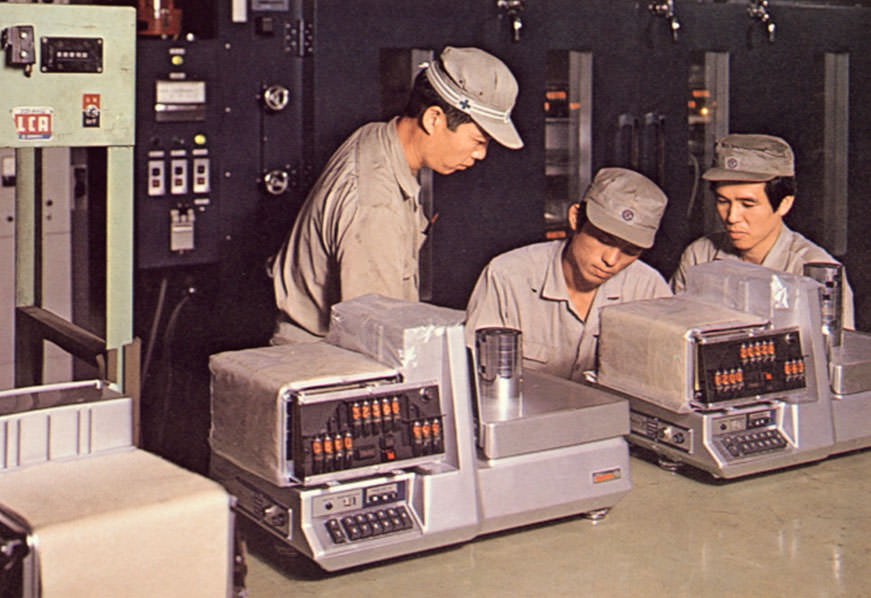 Assembling a price computing scale for the U.S. market
Assembling a price computing scale for the U.S. market
The Diversification of Measuring Business. Achieving Record-Breaking Sales in Household and Commercial Applications
In addition to its main business of manufacturing industrial scales, Kubota developed domestic and commercial measuring instruments. In regards to domestic application, it released products such as the health meter, kitchen scale, and baby scale in the beginning of 1960, producing a total of 500,000 health meters and 1 million kitchen scales. In terms of commercial weighing instruments, such as the ones used at the butcher’s and groceries stores, Kubota released the photoelectric digital price computing scale called “Funade”, a ground-breaking replacement to the mechanical instrument in 1968. It then developed a labeling system, which automated weighing, pricing, and labeling perishable foods.
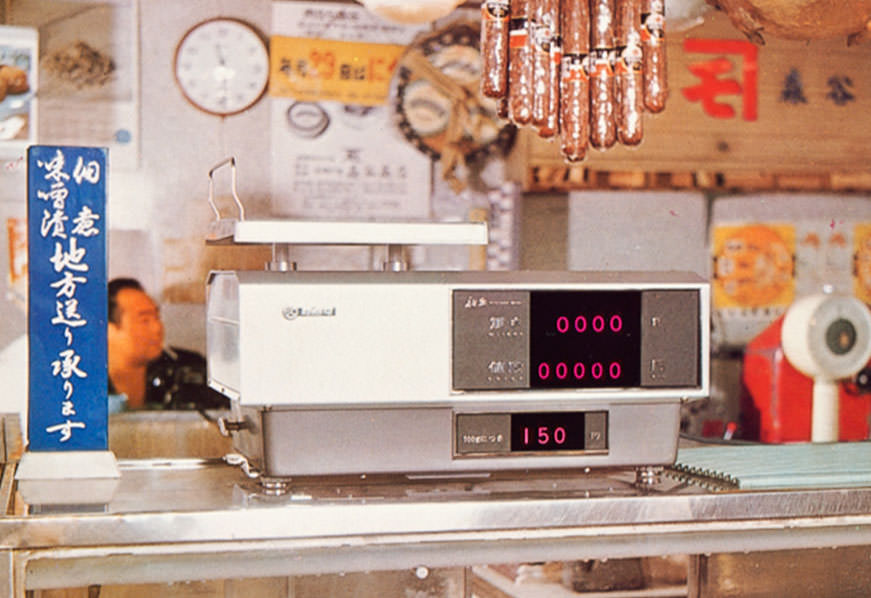 Funade, the first photoelectric digital and price computing scale
Funade, the first photoelectric digital and price computing scale
1970-1980s
The Economy Transitioned into a Period of Stability and Maturity, as a Result of the Oil Crisis
The oil crisis, which hit Japan during its rapid economic growth, led the country into a period of economic stability and maturity. Investments into the manufacturing facilities of massive and heavy industries declined, and Japan’s economy completely changed. Due to the diminishing economy, industries searched for a new path forward. A breakthrough was made through digital technology.
Scroll to See Next Story
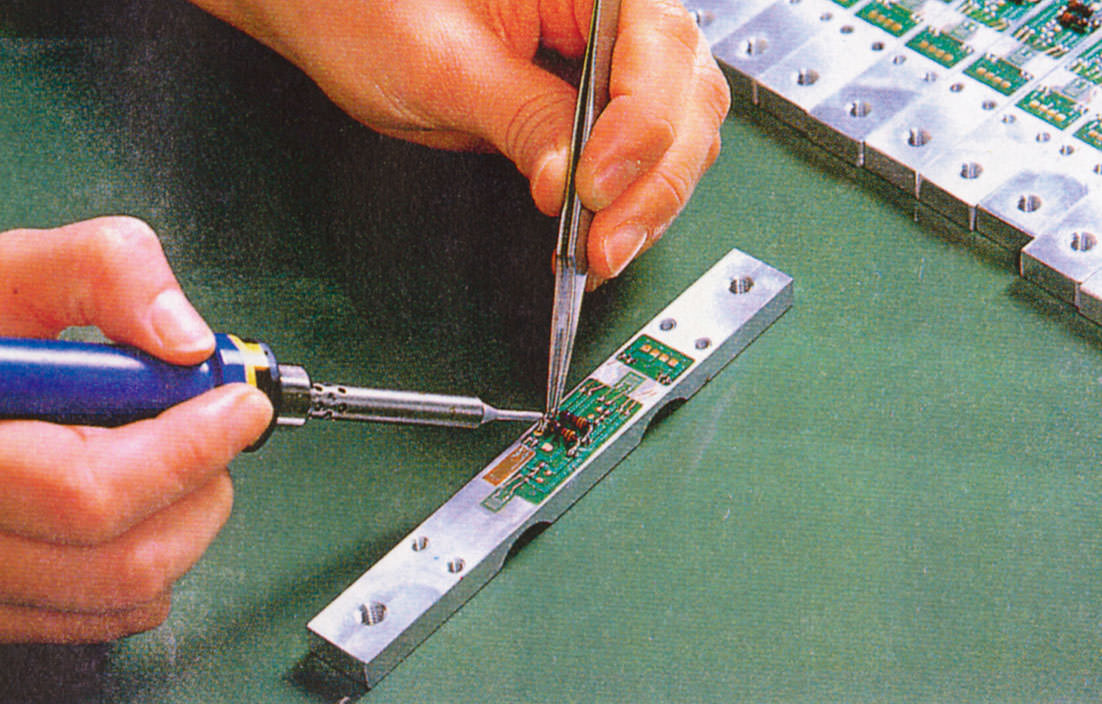
1970-1980s
Digitization Accelerated the Expansion
of Kubota’s Business Domain
Industrial Scales, Powder Feeder, Multi-Functional Automatic Vending Machine
Wiring of load cells, which promoted the digitization of weighing devices
The oil crisis dramatically increased oil price, and the world was plunged into recession at once. While the Japanese economy endured by scaling back on massive and heavy industry market and promoting energy efficiency, Kubota sought to expand its business domain by developing and applying weighing, measuring and control technologies, in which it had led the industry.
The Steel Industry Struggled as a Result of the Oil Crisis. Kubota Entered the New Market for Chemical and Oil with Digital Technology
The steel market, which was the main buyer of industrial scales, diminished as a result of the oil crisis. In order to break through this situation, Kubota developed high-value-added products and expanded its business domain by applying digital technology it had developed over the years. In 1978, it released the multi-load cell truck scale. It then started the production of powder feeders for chemical and oil industries, which fed, weighed, and mixed powder and granular raw materials in one stretch, an LPG filling machine, and a 1/3000 high precision electronic explosion-proof platform scale. By introducing compact, high precision, systemized products applying digital technology, Kubota entered the new chemical and oil market.
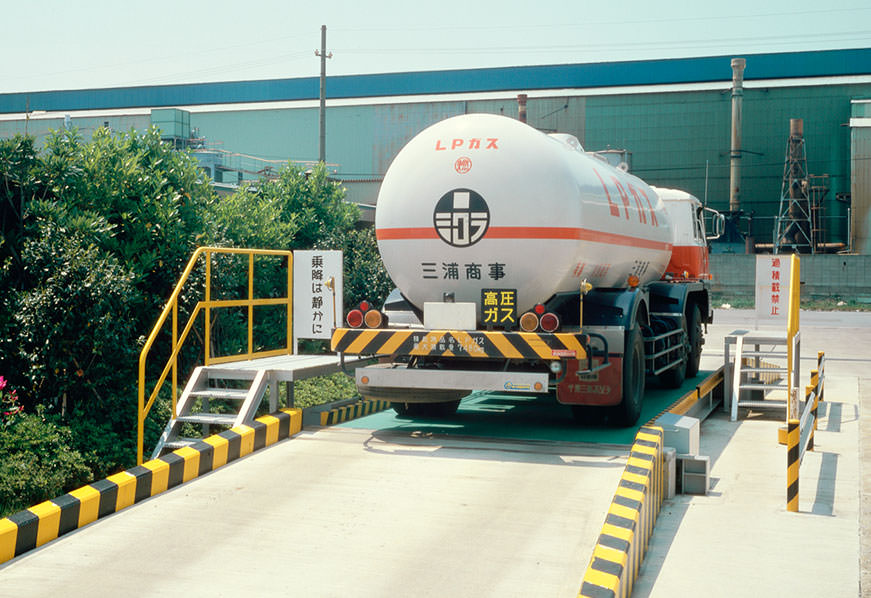 Multi-load cell truck scale, which simplified groundwork
Multi-load cell truck scale, which simplified groundwork
Kubota’s Business Diversified with the Digitization of Weighing, Measuring, and Control Technology
The digitization of scales brought in strength and flexibility to Kubota’s business. In 1977, Kubota’s hopper scales were installed in common rice-drying facilities, and, in 1983, it developed a coin operated rice-polishing machine. It entered the agricultural market, as well as expanded into the control system business. Furthermore, the CAD software for machine design developed for factory automation (FA) computers in 1985 led to the development of Kubota’s CAD business. The in-house manufacturing of electronic circuit boards for scales and vending machines led to the production of the external memory device EXABYTE for computers and the development of Kubota’s computer business. By applying its core technology, Kubota was able to diversify its business.
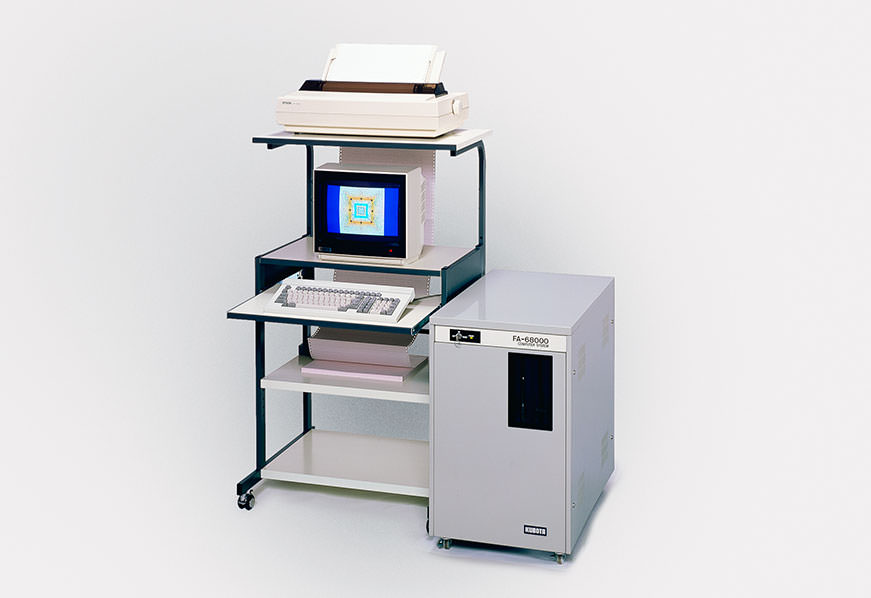 The FA-68000 industrial scale data processing computer
The FA-68000 industrial scale data processing computer
From Cup Noodles to Rice and Meal Tickets—Automatic Vending Machines Diversified and Added Multiple Features
Japanese vending machines grew to a 160 billion yen industry by the middle of the 1980s. The containers for soft drinks in vending machines changed from glasses to cans. Along with the development of electronic technology, the types of products inside machines also broadened, from cup noodles to rice, diversifying their use and providing different features. In 1979, Kubota implemented the post-mixing technology introduced by The Vendo Company (United States), which mixed liquid concentrates inside the machine to create a drink. Furthermore, it released innovative products one after another, such as the cigarette vending machine embedded with a sales data tracking device, coffee vending machine featuring a grinder, and meal ticket vending machine installed with a floppy disc.
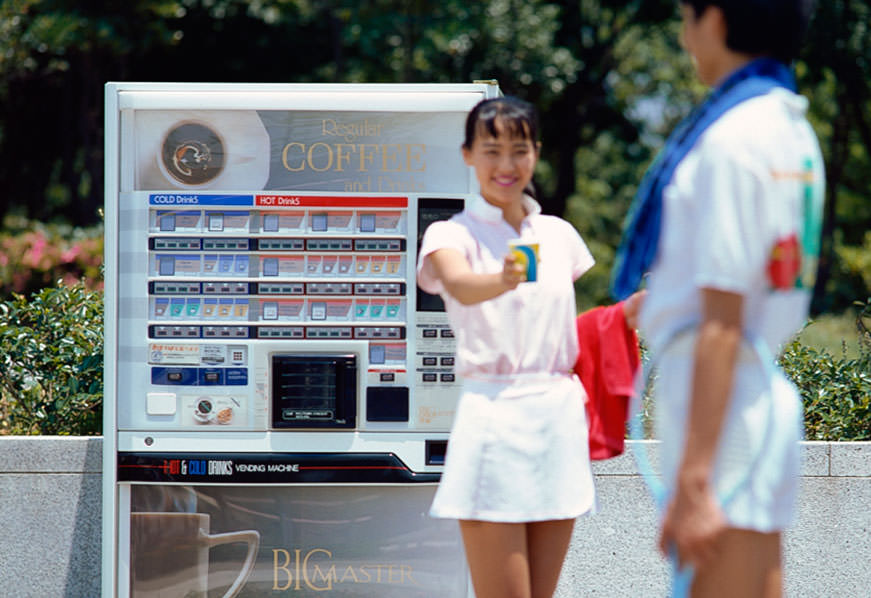 Post-mix vending machine Big Master, which can create 169 different flavors
Post-mix vending machine Big Master, which can create 169 different flavors
1990s-
The Prolonged Recession. Industries Enter the IoT Era
In order to curb facility investment amid the prolonging recession, new construction and expansion of industrial facilities in the country had decreased, and renewing and improving existing facilities had become more common, as the industrial world largely transformed. Furthermore, IoT was introduced to the manufacturing industry in recent years, entering a time in which the role of weights and measures have become much more important.
Scroll to See Next Story
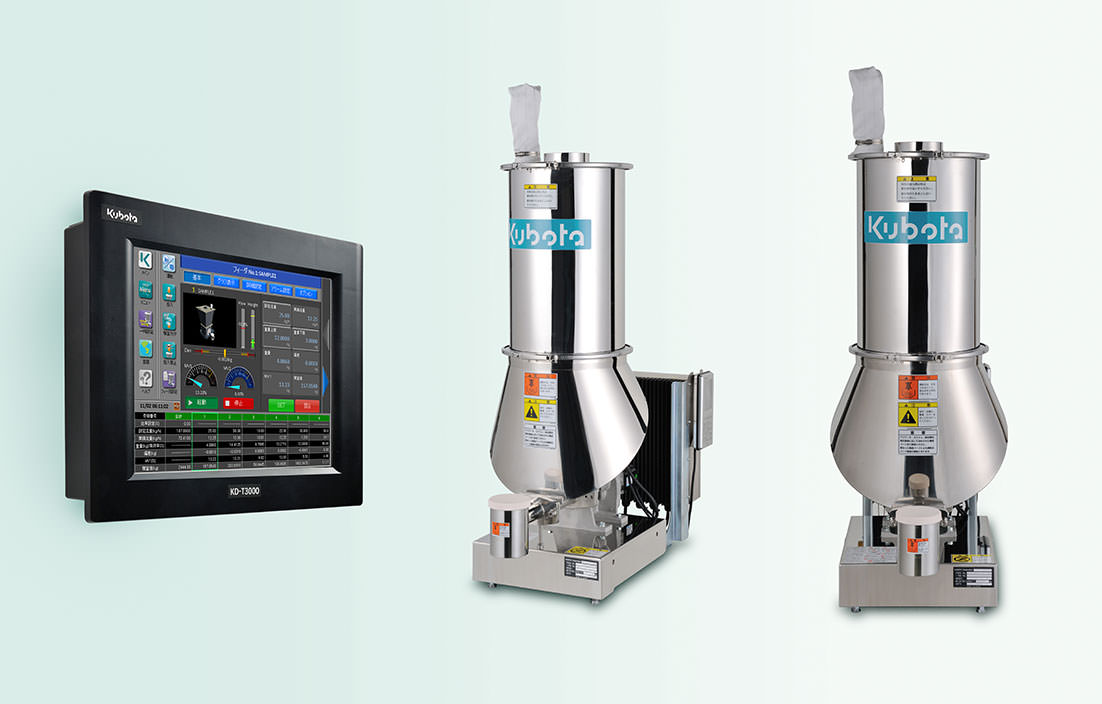
1990s-
Taking on the “Sensitivity”
of Next Generation Products
Digital Load Cell, Non-destructive Fruit Quality Meter,
Plastic Screening System, Production Line Monitoring System
Screw Weighing Feeder NX, which measures powder and feeds at a given rate
Kubota’s weight and measurement business, which started from weighing objects, achieved various technological innovations, enabling the “measurement” of colors and even tastes. It will continue to develop products that will enhance the “senses” of next generation IoT products, measuring and processing all sorts of information.
Developed Japan’s First Digital Load Cell with High-Precision, Stability, and Noise-Resistance
Kubota acquired the designated manufacturing business operators for specified measuring instruments license in 1994 and started to respond to more diverse and precise requests. One of the notable achievements since 2000 is the release of the first domestic digital load cell. This product, which enabled the direct output of digital signals from a strain gauge load cell, is resilient to environmental temperature change as well as noise and can measure with high accuracy. Furthermore, compared with an analog load cell, it is easier to maintain and more cost efficient. Kubota was the first to commercialize this in Japan and installed it in almost all its scales.
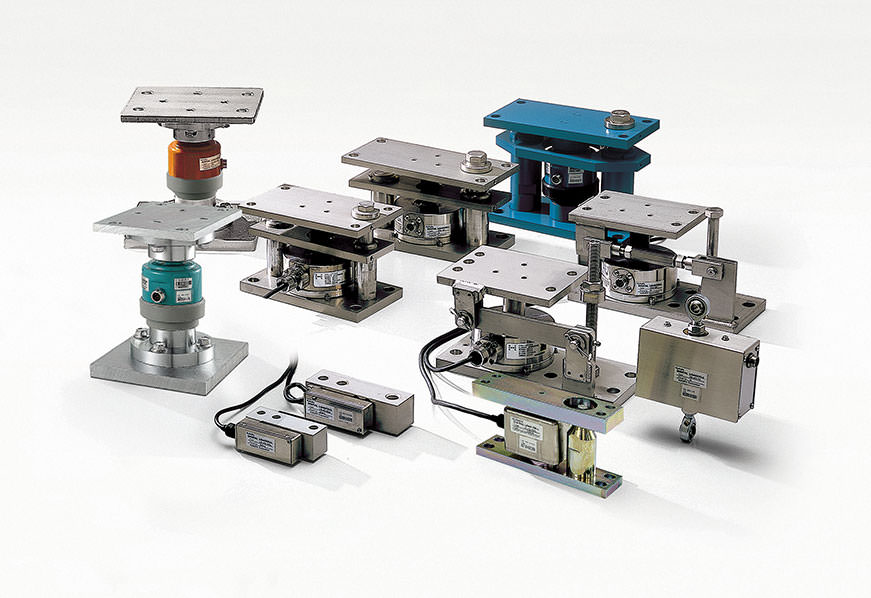 With a built-in electronic circuit, digital load cells directly process digital signals
With a built-in electronic circuit, digital load cells directly process digital signals
“Visualizing Measurements”—Accurate Data Can Transform Production Sites and Management
As represented in Fruit Selector, the non-destructive fruit quality meter using NIR technology developed in 1999, and KG-A, the color and foreign object sorter for rice developed in 2005, Kubota, in recent years, has been proposing new solutions combining weighing technology with such measuring technologies as optics and imaging. In addition, as seen in the agricultural equipment installed with a “taste and yield sensor” and Craftpat production line monitoring system created in 2015, Kubota has ‘visualized’ all sorts of ‘measurements’ including those from facilities and sensors which constitute the clients’ production line, supporting business management by enhancing quality and productivity as well as achieving set goals.
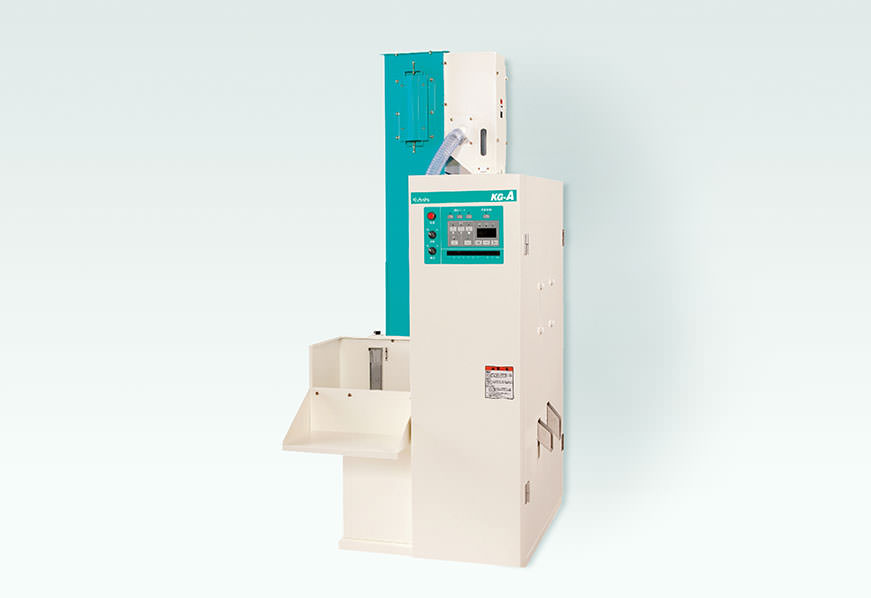 The KG-A Series color and foreign object sorter for rice, which detects
The KG-A Series color and foreign object sorter for rice, which detects
and analyzes the color of rice and removes defected materials
Honing Its Weighing and Measuring Technology to Support Technical Innovation in Manufacturing
In the field of product development, technological innovations such as IoT and AI are remarkably advancing. What supports these technologies is a vast amount of data. In order to collect basic data, Kubota will polish its technology to accurately weigh and measure and continue to provide instruments supporting manufacturing.
